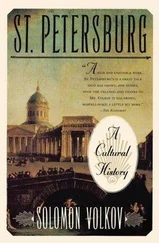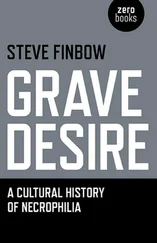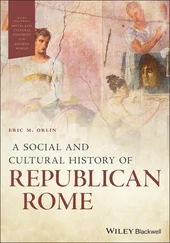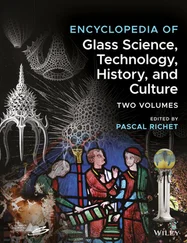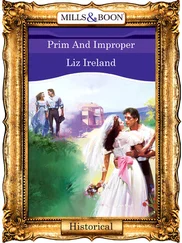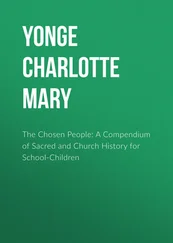A Social and Cultural History 1922–2002

For Sue, again.
Cover Page
Title Page IRELAND A Social and Cultural History 1922–2002
Dedication For Sue, again.
Preface to the Second Edition
Preface
PART I: 1922–32
1 After the Revolution: Conservatism and Continuity
2 An Irish Ireland: Language and Literature
3 Images and Realities
4 The Fate of the Irish Left and of the Protestant Minority
PART II: 1932–58
5 The 1930s: A Self–Sufficient Ireland?
6 “The Emergency”: A Watershed
7 Stagnation and Crisis
PART III: 1959–79
8 Economic Revival
9 Decades of Debate
10 Culture and a Changing Society
PART IV: 1980–2002
11 The Uncertain 1980s
12 Revelations and Recovery
13 Conclusion: Culture and Memory in an International Context
Acknowledgements
Notes and References
Index
About the Author
Copyright
About the Publisher
Preface to the Second Edition
A new edition of a book written over twenty years ago offers various opportunities. One is the chance to correct errors that marred the earlier version. I have accordingly corrected a number of such errors and am grateful to those who brought some of them to my attention (in particular to Eamon Cantwell who directed me to a dissertation which convincingly identified the editor of the Catholic Bulletin in the 1920s).
Another opportunity that I have taken is to recast material so that where it read in 1981 and 1985, when earlier versions of this work appeared, as referring to recent events or to the present, it now refers clearly to the past. This has involved here and there some changes of emphases and, especially in Part III, the incorporation of some additional information. I should say however that this new edition is by no means presented as a re-written version of the book I originally published in 1981. In the preface to that volume I reflected on the difficulties of the task I had set myself then in composing a work of synthesis when so much primary research on twentieth-century Ireland remained to be done. Of course since that date, as I note in this edition, the field of Irish Studies has burgeoned and more works on the social and cultural history of the period have appeared. However, reading through my own work for the purposes of bringing it up to date in the sense that it now covers the period 1922–2002, I was sufficiently happy with the general thesis I had propounded in 1981 to allow it substantially to stand. Therefore what this book does now offer is a volume not in three parts but in four. Part IV deals with the period 1980 to 2002 (incorporating in chapter eleven some material which first saw the light of day in a postscript to the 1985 version of the text), where the first edition had 1979 as its date of termination. This section of the book is now quite lengthy, addressing as it does the quite remarkable events of the 1980s and 1990s when Ireland went from near bankruptcy to economic resurrection, when the “peace process” was inaugurated and the problem of Northern Ireland was confronted by the governments of Britain and Ireland with sustained determination. It was a period too when the Catholic church experienced crises of proportions that would have seemed unimaginable in earlier decades, as Irish society entered on a phase of profound self-questioning in an era of revelations and remembering. I trust this book will allow readers to consider developments of the last two decades of the twentieth century in the context of what had gone before and will take its place as a contribution to the ongoing debate about Ireland’s present and future.
T.B.
Trinity College, Dublin, 1 March 2003
The main focus of this work is the intellectual and cultural history of Ireland since independence. It will quickly be evident, however, that I am also interested in establishing the main outlines of the social history of independent Ireland since the Treaty of 1921. I trust that my reasons for entertaining these dual ambitions will be clear from my text, but it may be as well to indicate them very briefly here.
It was necessary to establish an outline of modern Irish social history for this study since to fail to do so would be to suggest that high culture – intellectual endeavour and debate, the arts – has a life completely independent of the social reality in which it occurs of a kind which I do not believe it possesses. Ideologies, ideas, symbols, literary and cultural periodicals, even lyric poems are social facts, just as potato crops, tractors, and new industries are, and they can be fully understood only within the material world in which they come to life. So a recurrent preoccupation of this book in its first two parts is the analysis of how, for much of the period, certain ideas, images, and symbols provided Irish people with part of their sense of national identity. For this was a post-colonial society beset by manifold problems, but anxious nevertheless to achieve an independent and distinctive life. Part III of this book looks at how these conceptions and aspirations fared in the new social order that has been in the making in the last twenty years, following the economic revival of the early 1960s. But what also concerns me throughout is how social and cultural change are involved with one another. So the modernization of the last two decades in Ireland is seen to be in part the result of social and cultural factors that had been in the making since about the period of the Second World War, when the framework that had held together since independence began to disintegrate.
It is this concern to measure change and account for it that determines the structure of the book. Part I explores in detail the social and the cultural life of the Irish Free State in its first decade. Despite some signs of change, there was a conservative continuum with pre-revolutionary Ireland, and minorities and critics in the new order had little chance to make their will felt. Part II considers both how and why that continuity was sustained well into the modern period, but detects social and cultural evidences of major change in embryo and analyzes the possible causes of these. Part III presents the social and cultural history of the last two decades in the Republic of Ireland as a period of striking change when set against the picture that Parts I and II have painted of the earlier years of independence.
In Ireland intellectual, cultural, and social history are each infant disciplines. The writer who aspires to provide a study synthesizing the three areas is faced therefore with many insurmountable difficulties, not the least that much basic research has simply not yet been attempted. As a result, this book is very much a provisional and speculative sketch, with few pretensions to completeness in most areas. It is of course the danger of such sketches, particularly of recent and contemporary history, that they become mere caricatures. But without such attempts to chart the field, more fundamental research may not proceed as it must do if more assured works are to result in the future. It is as a preliminary mapping of the territory that I hope this book may prove useful.
I am grateful to the work of those scholars and critics who have, despite the perils, ventured into the turbulent scas of twentieth-century Irish historical research. My considerable indebtedness to them is clearly evident in my notes and references. Some of them are my colleagues in Trinity College, and I am happy to record here my gratitude to them too for their efforts to respond to my often naive inquiries in the last few years. I am also grateful to Miss Geraldine Mangan and Miss Dee Jones, who typed the manuscript at various stages of its production. To my wife, Suzanne, who arranged many things so that this work might be completed, my gratitude is expressed in the dedication.
Читать дальше


